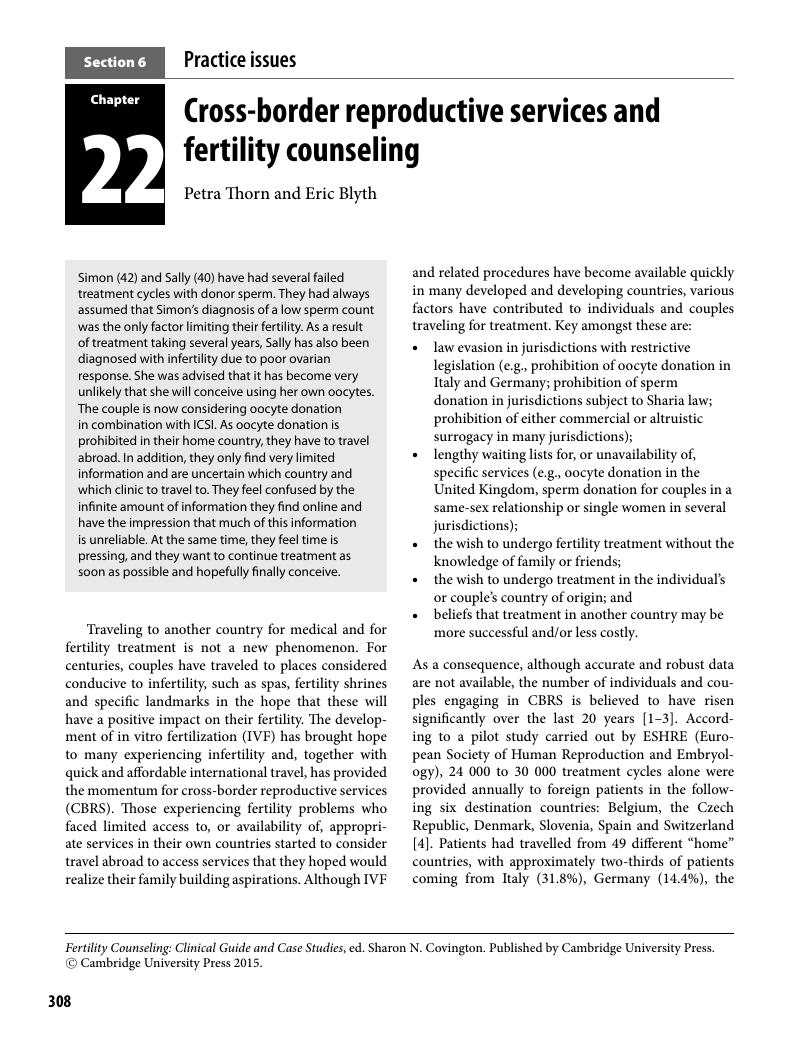Book contents
- Fertility CounselingClinical Guide and Case Studies
- Fertility Counseling
- Copyright page
- Dedication
- Contents
- Contributors
- Foreword
- Book part
- Section 1 Introduction
- Section 2 Therapeutic approaches
- Section 3 Third party reproduction: assessment and preparation
- Section 4 The expanding image of families
- Section 5 Special topics in fertility counseling
- Section 6 Practice issues
- Chapter 19 An evidence-based approach to counseling for fertility treatment compliance
- Chapter 20 Ethical aspects of fertility counseling
- Chapter 21 Legal issues for fertility counselors
- Chapter 22 Cross-borderreproductive services and fertility counseling
- Glossary
- Index
- References
Chapter 22 - Cross-borderreproductive services and fertility counseling
from Section 6 - Practice issues
Published online by Cambridge University Press: 05 May 2015
- Fertility CounselingClinical Guide and Case Studies
- Fertility Counseling
- Copyright page
- Dedication
- Contents
- Contributors
- Foreword
- Book part
- Section 1 Introduction
- Section 2 Therapeutic approaches
- Section 3 Third party reproduction: assessment and preparation
- Section 4 The expanding image of families
- Section 5 Special topics in fertility counseling
- Section 6 Practice issues
- Chapter 19 An evidence-based approach to counseling for fertility treatment compliance
- Chapter 20 Ethical aspects of fertility counseling
- Chapter 21 Legal issues for fertility counselors
- Chapter 22 Cross-borderreproductive services and fertility counseling
- Glossary
- Index
- References
Summary

- Type
- Chapter
- Information
- Fertility CounselingClinical Guide and Case Studies, pp. 308 - 320Publisher: Cambridge University PressPrint publication year: 2015



